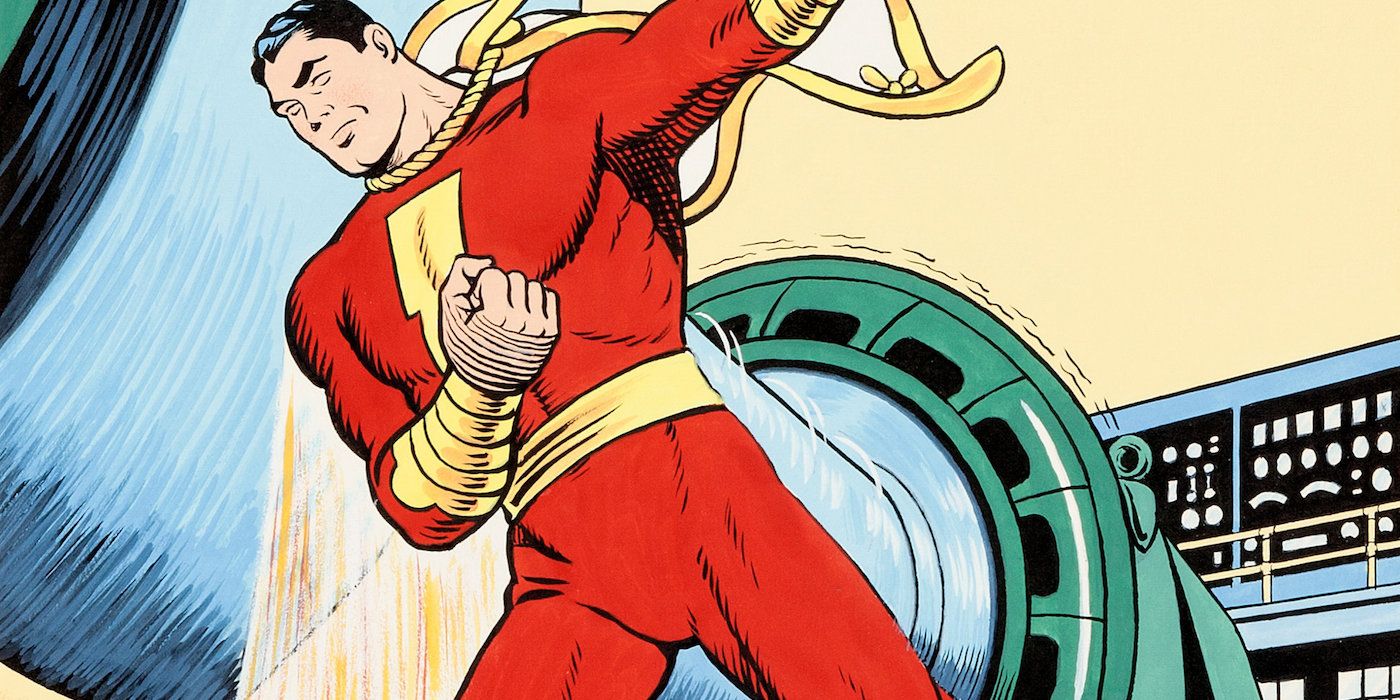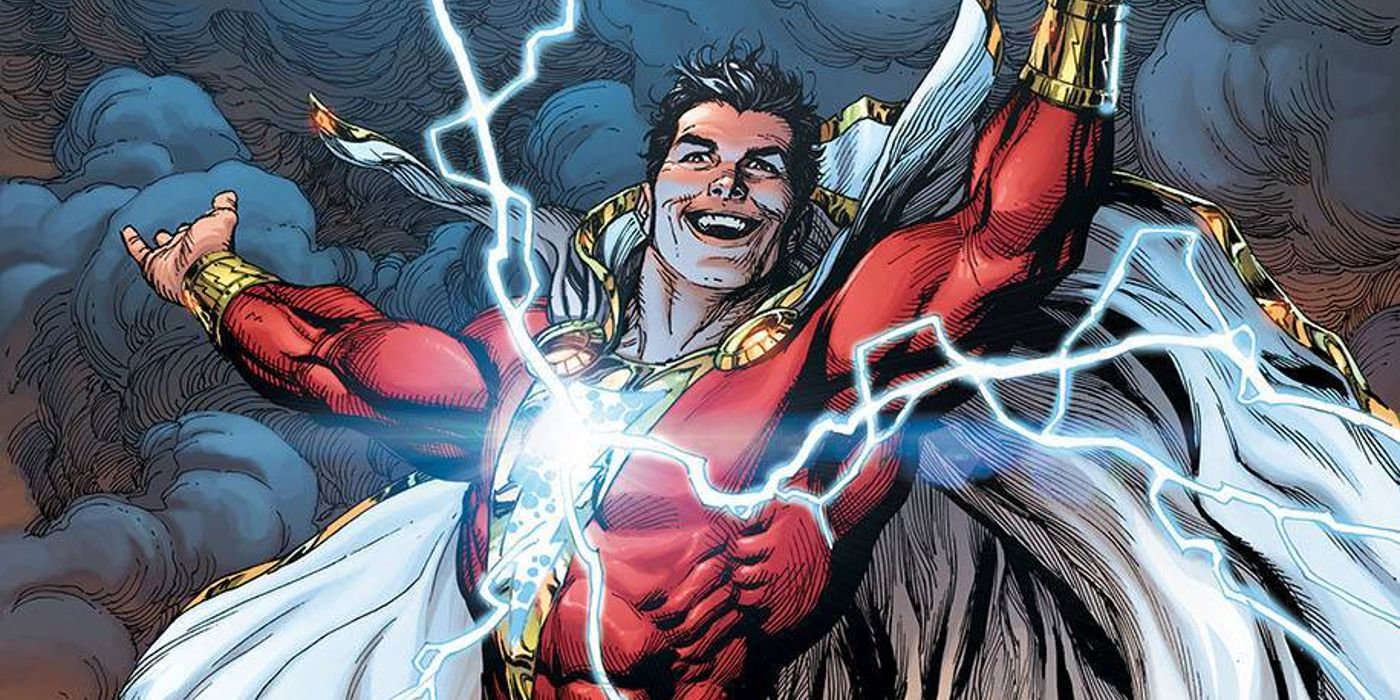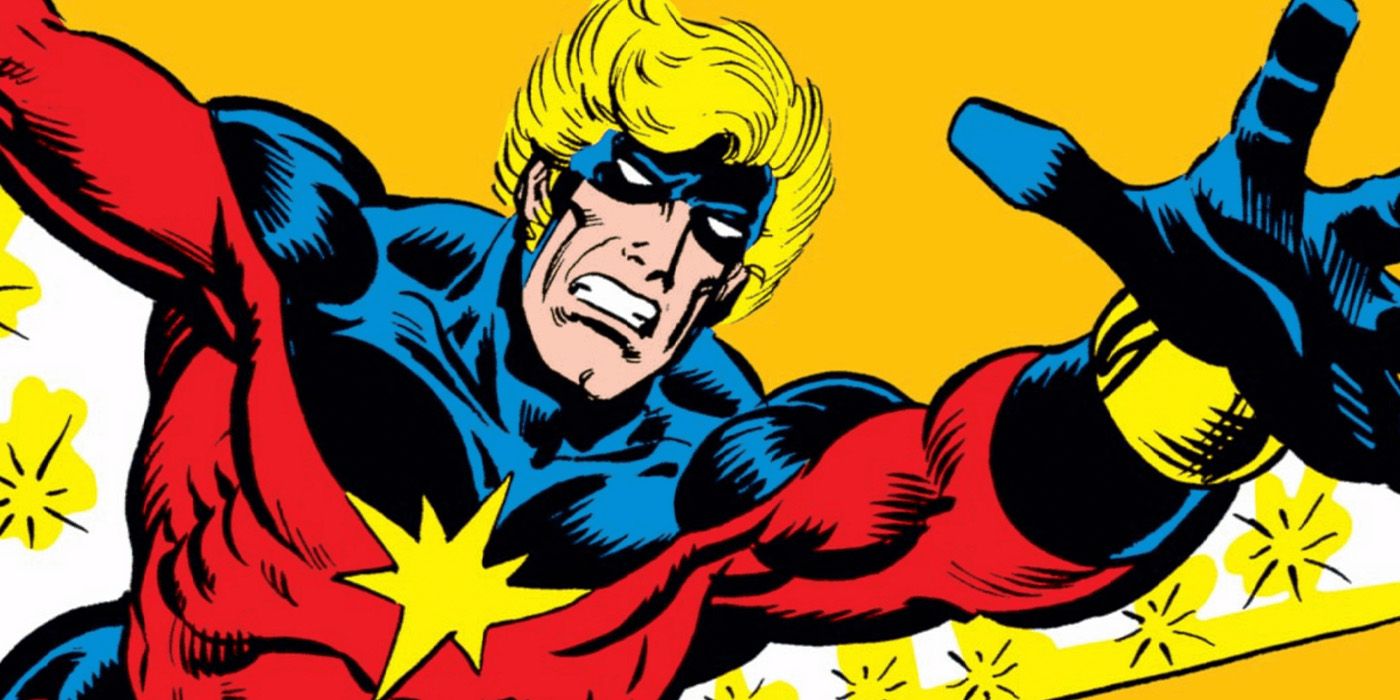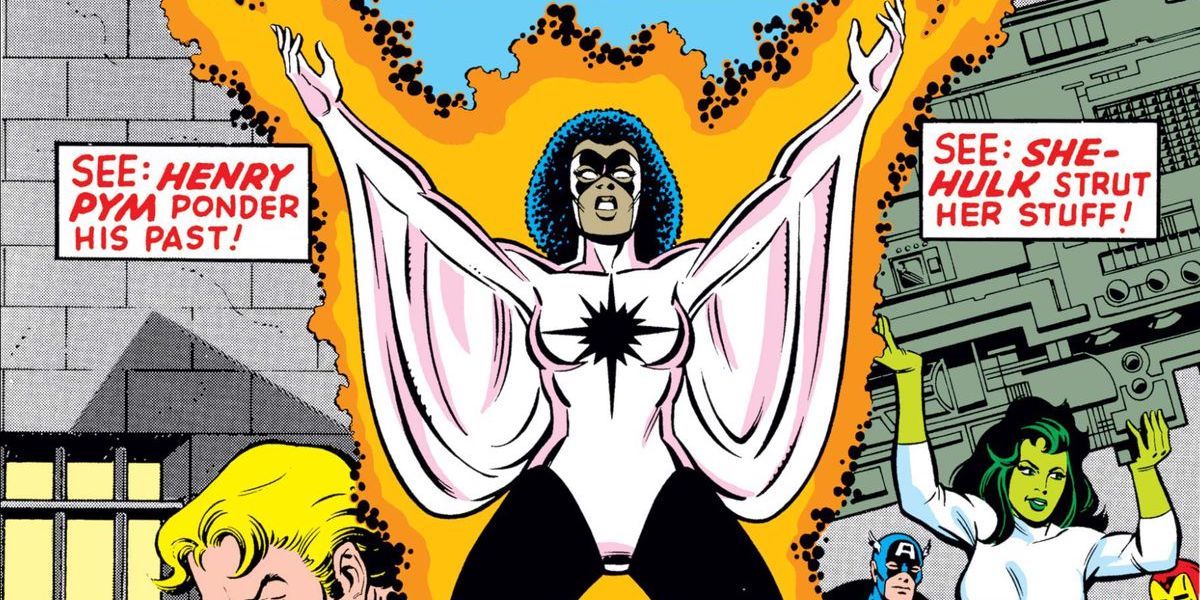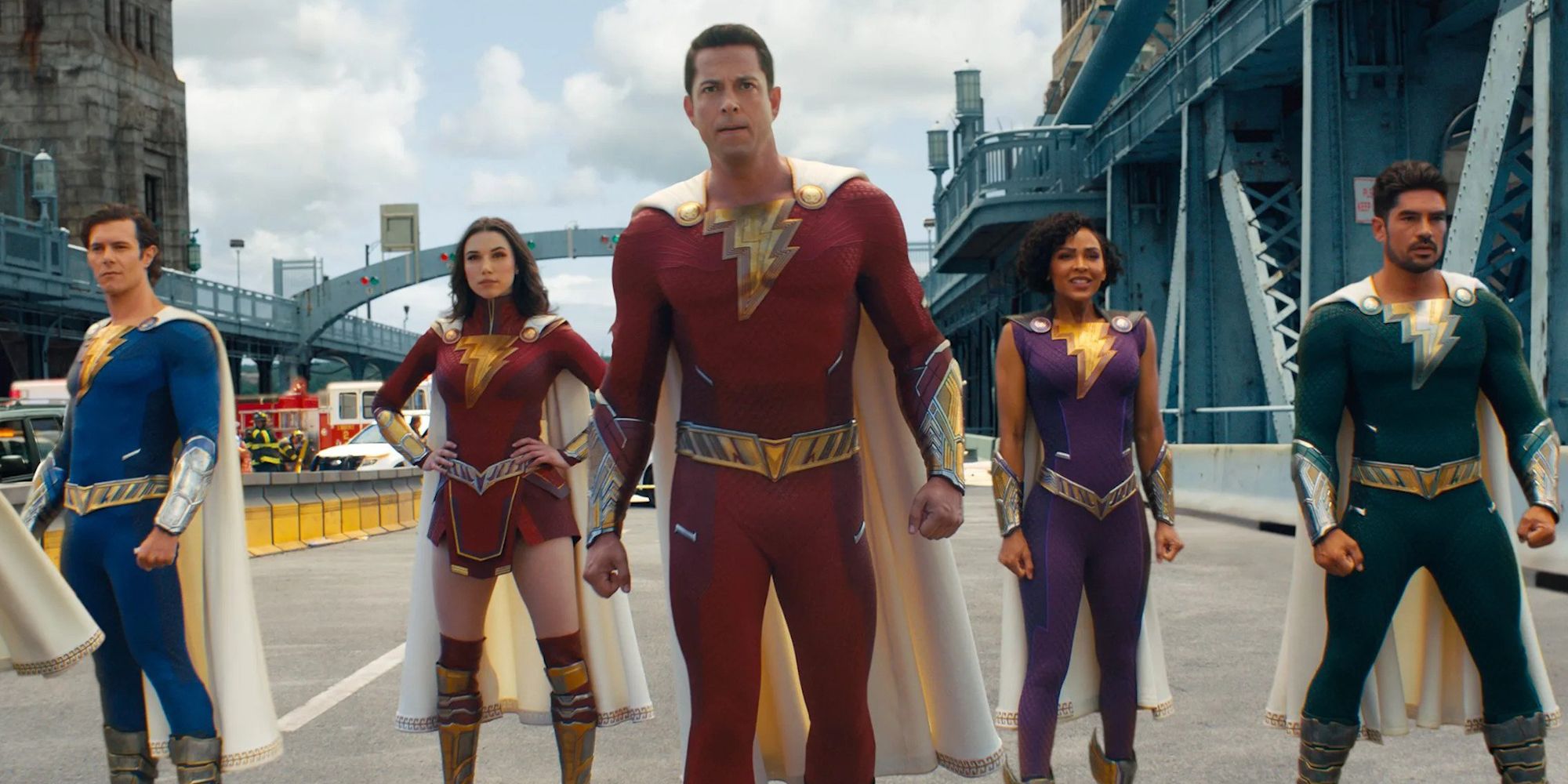The Big Picture
- Fawcett Comics birthed the original Captain Marvel in the 1930s.
- Legal battles led to the shift from Captain Marvel to Shazam! and the birth of Marvel’s own Captain Marvel series.
- The 21st century saw rebranding for both Captain Marvel and Shazam, who have now also become successful Hollywood heroes.
If you didn’t know it before now, there are two distinct Captain Marvels throughout comic book lore. Well, there are actually more than two, but both DC and Marvel Comics each own a character best known by the moniker. But regardless of which Captain you prefer or grew up with, there is a lengthy comic book history associated with that name — a history that can get a bit convoluted and confusing. Hopefully, with the Wisdom of Solomon, we can fix that. 2023 saw the release of Shazam!: Fury of the Gods and The Marvels, but before revisiting these super-powered sequels, it might be time to brush up on your Captain Marvel history. While DC might not traditionally use the Captain Marvel moniker now, the Shazam! character’s association with it sometimes makes things a bit difficult to work through. So, let’s fly into the pages of Captain Marvel and discover just who came first and why there’s so much convolution today!
Fawcett Comics Developed the Original Captain Marvel
In 1939, just a year after the debut of Superman in Action Comics #1, comic book writer Bill Parker and artist C.C. Beck were hired by Fawcett Comics to develop a “Superman” of their own. It wasn’t long before the character––who eventually became Captain Marvel––was born, first appearing officially as “Captain Marvel” in Whiz Comics #2 (which is technically the first issue, but that’s a different rabbit hole). After a few false starts, the character became an instant hit, eventually gaining his own solo series and headlining the Fawcett Comics brand. Soon, sidekicks and spin-offs were invented, and, eventually, Captain Marvel became just as famous as Superman, if not more so.
It wasn’t long before Captain Marvel spawned a large supporting cast that included his sister Mary Marvel, his best friend Freddy Freeman (aka Captain Marvel, Jr.), his talking tiger Tawny, Uncle Marvel, and yes, even Hoppy the Marvel Bunny. Just about every recurring cast member was given the power of Shazam, which only sparked more adventures and plenty of action-packed entertainment. Captain Marvel sold well during World War II, giving the American people hope during a darker time. Since Marvel Comics (known until the 1960s as Timely Comics) had Captain America under its belt, there was no pressing need for a “Captain Marvel” of their own. In fact, the Marvel brand had yet to be invented, and as such, Fawcett’s Captain Marvel was the only comic book superhero to hold that name for decades.
After DC Comics’ Legal Battle, Captain Marvel Became Shazam!
In 1941, DC Comics (who were known back then as National Comics) sued Fawcett Comics for copyright infringement, claiming that Captain Marvel had been based on Superman. Of course, he kind of had, but the fact remained that Captain Marvel was also vastly different from the Man of Steel. For one thing, Captain Marvel wasn’t “super” all the time. His alter-ego, Billy Batson, was an adolescent boy who used a magic word to gain his superpowers. Contrast this with Superman, an alien pretending to be human, and whose powers come from his alien biology. Not only that but their color schemes and personalities were different as well. Nevertheless, DC wouldn’t budge. Thankfully for the Captain, DC had failed to keep up with the copyright on Superman, and though it was decided that Fawcett had ripped DC off, the case was dropped a decade later. But that didn’t stop DC, who attempted to appeal the judge’s decision in 1952.
However, instead of returning to the legal battlefield, DC and Fawcett settled out of court. According to RetroFan Magazine, Fawcett was barred from publishing any more Captain Marvel stories going forward without DC’s express permission. Thus, Fawcett’s publication of Captain Marvel, namely Captain Marvel Adventures and The Marvel Family books, ended in January 1954. But, after years of cheap knock-offs and discounted “Marvelmen,” the original Big Red Cheese returned in the newly titled Shazam! series, published by DC Comics in the early 1970s, having been licensed by Fawcett (they wouldn’t actually purchase the character until the ’90s). But this was only the beginning of the feud between DC and Marvel over the use of “Captain Marvel.” While the character was still called Captain Marvel in the pages of “Shazam!,” Marvel Comics fought to keep the hero’s full superhero identity off the title page (at first, the Shazam! book rightfully branded itself “The Original Captain Marvel”), for reasons that will soon be obvious.
Marvel Comics Swooped in and Published Its Own Captain Marvel Series
After Fawcett could no longer use the character, the “Captain Marvel” name went unclaimed for over a decade. That is, until the recently re-branded Marvel Comics claimed it for themselves in 1967, publishing the first issue of their Captain Marvel series the following year. Created by Stan Lee and Gene Colan, the Kree warrior Mar-Vell had many of the same powers as Fawcett/DC’s version, only he was an alien being with cosmically-endued abilities. He wasn’t exactly the Big Red Cheese, but he did have a younger sidekick of his own (Rick Jones of The Incredible Hulk and Captain America fame) who was cosmically bonded to the new Captain. But Captain Marvel wasn’t a hit at first, and his series was initially canceled after the 21st issue. The publisher attempted to push the character into more significant storylines, which brought back Captain Marvelfor 40 more issues.
Eventually, Marvel introduced the Ms. Marvel character (Carol Danvers, in her original superhero identity) to renew interest, but it wasn’t enough. Though Marvel’s Captain became a fan favorite over time, his adventures were eventually cut short. Though, to keep the copyright, Marvel published the new Captain’s adventures off and on throughout the ’70s. In 1982, Captain Marvel got sick. He got cancer after being exposed to a toxic compound that finally killed him in The Death of Captain Marvel. Unlike most superheroes who eventually return from the dead, Mar-Vell was killed off in the series, and his death stuck. In all seriousness, The Death of Captain Marvel is often deemed one of the greatest comic book stories out there, because despite the death he knew was coming, Mar-Vell was still a hero through and through. Aside from some random “lost adventures” here and there (or the occasional temporary resurrection), Marvel’s original Captain Marvel was done. But, that didn’t stop the comic publisher from using his name again and again in order to keep the copyright intact…
Monica Rambeau Took Up Marvel’s Captain Marvel Mantle
Despite DC’s renewed interest in Captain Marvel, Marvel Comics continued to create new characters to take on Mar-Vell’s role in the Marvel Universe. The first was Monica Rambeau, a former police officer who was given energy-based powers, became an Avenger, and helped save the world (even the universe) a few times. Monica, who at one point led Earth’s Mightiest Heroes, held the name for over a decade before she eventually gave it up, trading it in for a handful of codenames before settling on Spectrum in recent years. Following Monica’s tenure, Genis-Vell, the genetically engineered son of Mar-Vell, took on the name, being bonded to Rick Jones just as his father had been. But he didn’t last either.
While DC Comics kept Billy Batson as their one-and-only Captain Marvel and even revived some of his original supporting cast (including Captain Marvel, Jr.), Marvel continued to experiment with the name. Though a few other alien heroes took on the Captain Marvel name over the years, including Genis-Vell’s sister, none were as beloved or influential as Mar-Vell. Instead, the title shifted and changed throughout the 21st century, until Marvel finally had enough. They were going to revive the brand once and for all, or die trying. Well, that’s a bit dramatic, but they did rebrand the character again in the 2010s, and this time it stuck––at least, it has so far.
Captain Marvel and Shazam! Both Got the Movie Treatment
In 2011, DC Comics launched their “New 52” initiative, rebooting their entire DC Universe of stories, heroes, and timelines. Creating a new world where the Justice League has only been around for five years, a new Shazam! back-up story ran in the pages of Geoff Johns‘Justice League before a new solo series was published. Re-writing Billy Batson from being a “pure at heart” champion for the titular Wizard to a bratty “teenager with attitude” was controversial, but even more so was the character’s official transition from Captain Marvel to simply “Shazam!.” “Everybody thinks he’s called Shazam already, outside of comics,” writer Johns told Newsarama, explaining that it made sense to officially change the character’s name after all these years. Given that DC couldn’t use “Captain Marvel” on their branding or merchandise, it did make naming the hero a bit tricky.
The same year that DC’s Captain Shazam got a makeover, Marvel re-branded Mar-Vell’s former partner Carol Danvers as the brand-new Captain Marvel, another controversial change at the time. Carol has since led different incarnations of the Avengers and even fought opposite Tony Stark/Iron Man in the sequel to the original Civil War comic book. Since then, she’s been a trademark Avenger and a powerhouse member of the MCU who continues to show up just about everywhere. “Carol has an incredible respect for Mar-Vell, as a person and as an icon,” writer Kelly Sue DeConnick said at WonderCon that year. With her Captain Marvel series, she hoped to prove that the name isn’t just for any one hero, but a mantle worthy to be passed on. In the past decade, Marvel has pushed their new champion hard, which is understandable given the name.
Since their recent re-brands, both DC’s newly minted Shazam and Marvel’s all-new Captain Marvel have become Hollywood heroes as well. Zachary Levi starred in 2019’s Shazam!, which saw the character’s first live-action appearance since his short-lived 1970s television series of the same name (back when he was still called Captain Marvel). That same year, Brie Larson joined the MCU as the titular hero in Captain Marvel, which sadly mistreated the original Mar-Vell in the process. After their feature film debuts, both heroes proved successful enough to warrant 2023 sequels, and each continues to spawn monthly comic book adventures at their respective publishers.
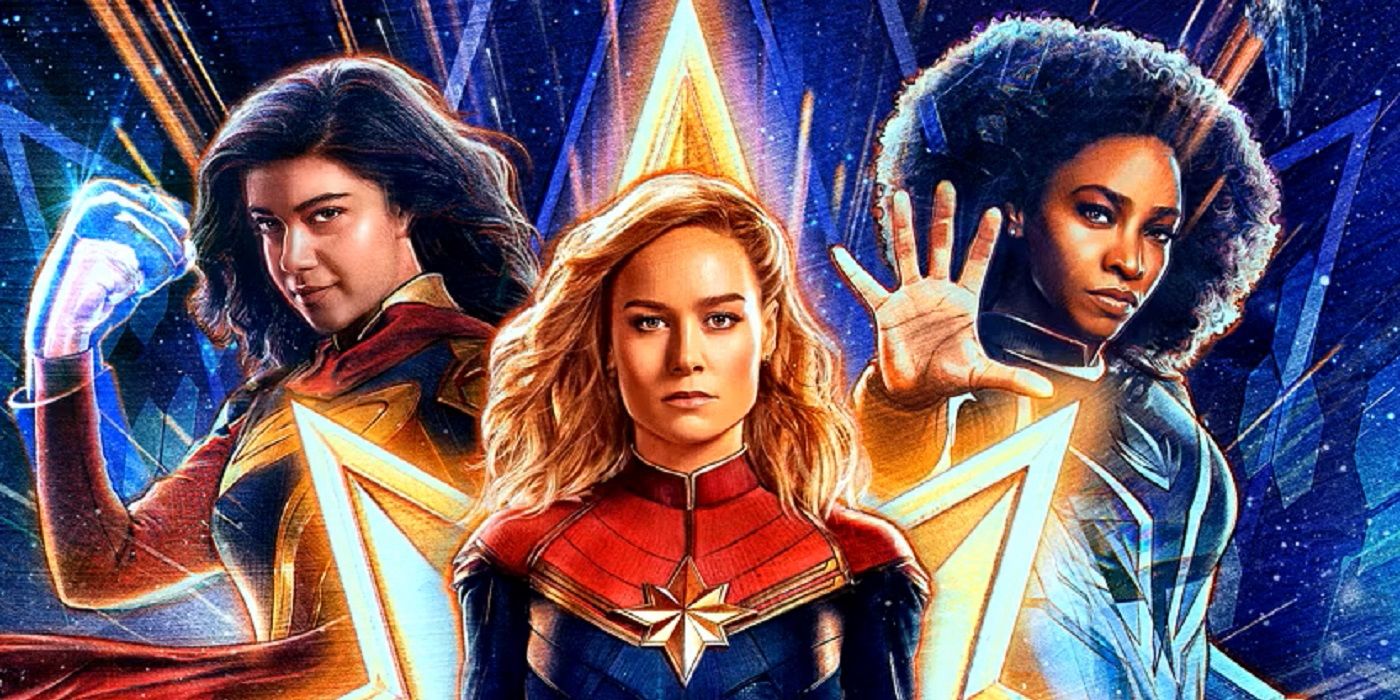
‘The Marvels’ Was Affected by the MCU’s Interconnectivity, Says Nia DaCosta
“Some of you is going to take a back seat.”
More Recently, “Captain” Was Added Back Into DC Comics
Although it doesn’t look like Marvel will be willing to give up the “Captain Marvel” name any time soon, that hasn’t stopped DC Comics from trying to revive the modern Shazam’s status as “Captain.” In fact, in recent issues of the latest Shazam! ongoing series, Billy Batson’s alter-ego is referred to as “The Captain.” Though the “Marvel” part has been dropped, the sudden return of the Captain moniker is a sign that the character may yet return to his roots. Then again, in the film Shazam!: Fury of the Gods, the Big Red Cheese is called “Captain Marvel” by a bystander (played by Michael Gray, who played Billy Batson in the original Shazam! television series). Though he has yet to be officially renamed, it’s clear that DC is looking to revive the hero’s original brand at some point down the line.
Of course, multiple Captain Marvels have existed for decades, and each of them has the incredible ability to persevere despite the existence of similarly named heroes. Even now, the Shazam family continues to grow and Marvel continues to reintroduce Ms. Marvel and Monica Rambeau to new audiences. There are more heroes connected to the Captain Marvel name now than ever, and that’s a good thing. Hopefully, even amidst plenty of comic book confusion, both Marvel and DC can learn to co-exist and share Captain Marvel in the future. After all, it’s one heck of a name.


